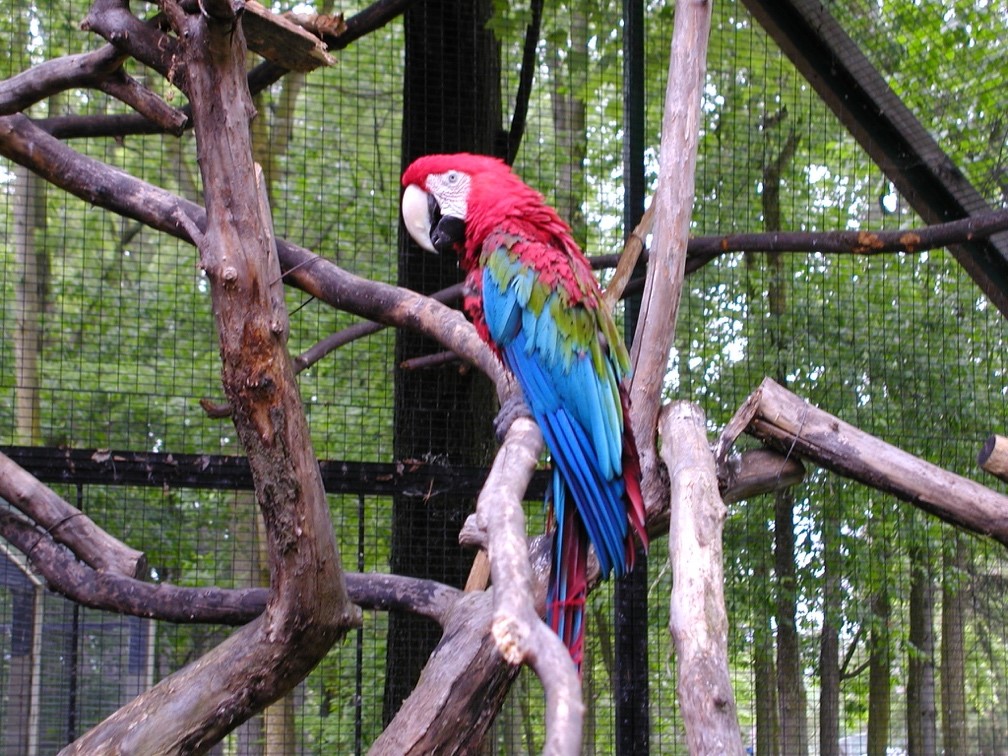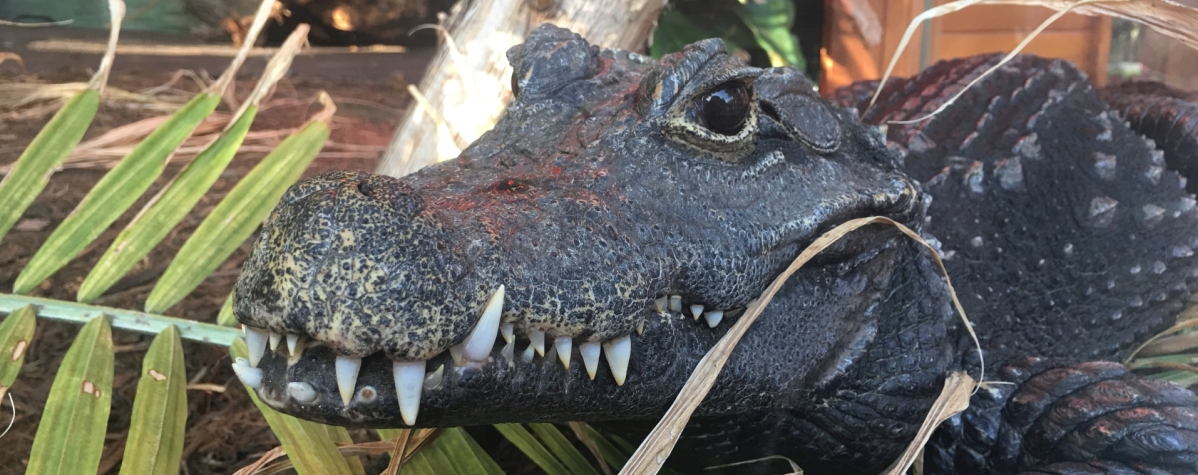Green-winged Macaw
Scientific Classification 
| Species |
Ara chloroptera |
| Kingdom | Animalia |
| Phylum | Chordata |
| Class | Aves |
| Order | Psittaciformes |
| Family | Psittacinae |
| IUCN Status | Least Concern |
Appearance and lifespan
The Green-winged Macaw is mostly red, with blue and green wings, a blue tail and grey legs. They have two toes that point forwards and two toes that point backwards on each foot. Their face is white and striped with small red feathers. Their upper beak is whitish and the lower beak is black. The iris of their eyes is white. This is of the largest of the Macaws, the Green-winged Macaw can grow up to three feet in length and three and half pounds in weight. Their wingspan can reach up to1.3 m (50 inches).
The lifespan of the Green-winged Macaw is 60 to 80 years.
Behavior and reproduction
Green-winged Macaws are affectionate, inquisitive, and intelligent. They are usually seen in pairs or family groups and sometimes gather in small flocks of six to twelve birds. Larger groups are found in feeding trees or on clay banks, where they may group with other Macaws. Macaws are normally monogamous, having only one mate for life. They are shy birds and hide very well even though they are brightly coloured. They are usually only heard within the forest; they will fly off making loud screeches when alarmed. Green-winged Macaws have excellent eyesight and hearing.
Breeding season ranges from November to March depending on the latitude the birds live in. They lay from one to three eggs, which incubate and hatch within 28 days. The baby macaws beg for food by flinging their wings and giving loud cries. The young leave the nest within 90 to 100 days. Green-winged Macaws reach reproductive maturity between 3 to 4 years of age. There may be as few as 15 to 25 young born each year to a group of 100 breeding pairs. They do not breed annually.
Ecology and habitat
Green-winged Macaws live in tropical forests and swamps in Central and South America, including Columbia, Panama, Venezuela, Guyana and Trinidad. They like the tropical lowlands at the borders of the jungle but can also be found in mangroves and savannas. Macaws often flock to mountains of clay known as "macaw licks". These licks contain minerals and salts essential to the bird's diet.
Macaws eat nuts, fruit, berries, seeds and some vegetable matter from trees. They can eat some poisonous fruits due to their habit of eating river clay, which appears to neutralize the toxins.
Food at the Zoo
At the Park and Zoo the macaws eat a parrot mix consisting of pellets and dried fruit as well as a variety of fruits, vegetables, seeds, and nuts. They also like to eat hard boiled eggs and cheese.
Threats
Usually a forest dwelling species, Green-winged Macaws, along with many of their parrot relatives, are under pressure from deforestation and human population growth. They are also popular in the pet trade, going easily for as much as $1,500. The green-winged macaw is extinct in some parts of its range, including Argentina. The U.S. Wild Bird Act forbids the commercial import of any bird listed by CITES which includes most parrots - endangered or threatened, without a CITES permit.
Did you know?
- Green-winged Macaws can learn to talk, but are not considered good mimics.
- This bird is often confused with the Scarlet Macaw because of the large amount of red feathering.
- Macaws can reach speeds of up to 56 Kilometres per hour.
Adopt a macaw
Become a part of the the Riverview Park and Zoo family through our Adopt an Animal Program!


